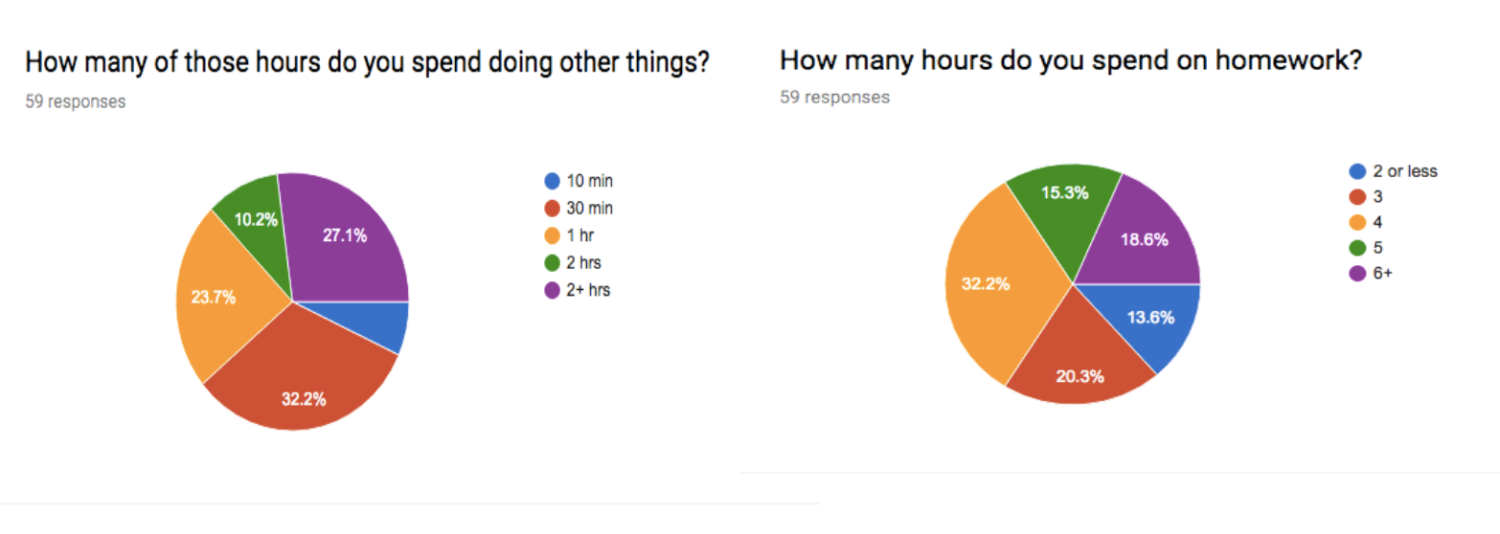Data Journalism Edition: The Truth Behind the Screen
According to the Palo Alto Medical Foundation, 55% of what causes stress in high school students is homework. Especially among Bergen County Academies students, stress is the norm. There are different subcategories that cause stress, including homework, social life, sports, extracurriculars, and the constant reminder of college applications. Over the past few decades, there has been a rise in the number of hours a student spends on homework, with the average high school student spending 3.5 hours a day working at their desk. The New York Times stated that this is a “gross tonnage of today’s homework” while Oprah Winfrey dedicated one of her shows to the “onslaught of homework.”
Is there a specific reason behind the increase in homework? Is it the teacher’s or the student’s fault? One underlooked and potentially powerful reason may be the change in studying methods from writing on paper to using the screen.
As one of the top high schools in New Jersey with the most advanced equipment, it is not surprising that BCA students use technology as a key tool for studying. Technology means mobile-enabled devices. These can include laptops, iPads, and other tablets. They are an alternative to faster notes that provide easier access to information, simpler ways to collaborate with others, and better organization.
Because of the mass benefits that technology brings, its presence has increased in classrooms. More and more schools have suspended the rules concerning prohibition of technological devices by allowing students to bring laptops or providing them with laptops.
According to a recent survey of 59 BCA students, 98.3% of them use laptops or other electronic devices in school. The access to technology can lead students to become distracted. In the same survey, only 52.5% of those students felt that they were productive when using these devices. Not surprisingly, 27.1% spend two or more hours doing other things while on their laptops. Without Internet access, a student may be more focused on the task on hand, rather than on creating a new tab and searching up fun articles, watching Netflix, or playing video games.
Teachers are adjusting to the new shift as well. Students are distracted not only at home, but also in school.
Dr. Bajwa has been a biology teacher at the Academies for 15 years. During this time frame, she has seen the shift from paper to the Internet.
She stated, “I think more than 50% are not using them [laptops] for class.” She also noted that because she is at the front of the class, the screens are not facing her, so she cannot exactly see what students are doing. However, their reactions, such as snickering and smiling, are a giveaway in class and crumbles the potential for a meaningful relationship between student and teacher. She keeps encouraging her students to take notes by hand.
One piece of technology that students have found useful is the Self Block App. This app is available to androids and Mac laptops and provides a customizable blacklist to which people can add distracting websites they wish stay away from. After completing this list, the user can choose a time frame of up to 24 hours for the sites to stay blocked. Even if the user wants to cheat out of their way of the app by deleting it or restarting the computer, the timer will still be active until the time is up.
Other apps that function similarly are Freedom, Concentrate, and FocusBooster. These apps contribute to the concentration that a student would want when studying or completing homework. In fact, there are several articles recommending the “best apps to focus on work” or “most useful apps for students.” In a January 2017 article, Social Media Today states a staggering statistic: Teens now spend up to nine hours a day on social media. Therefore, these apps could be useful in controlling the amount of time spent on Twitter, Facebook, Instagram, and Snapchat.
However, not all use of technology is detrimental. Mrs. Wallace, a history teacher at Bergen County Academies, had a different view on the subject of laptops. She noted that when students need to work on projects, Google Docs is an essential tool for sharing and commenting. Yet, she also stated that eye contact between the students and the teacher is very limited because students tend to look more at the screen rather than at the lesson in front of them.
Keeping both ideas in mind, Mrs. Wallace stated, “I think the world is going digital, so I think if we can grapple with the best way to use laptops in class there could be a benefit to that for students’ futures.”

